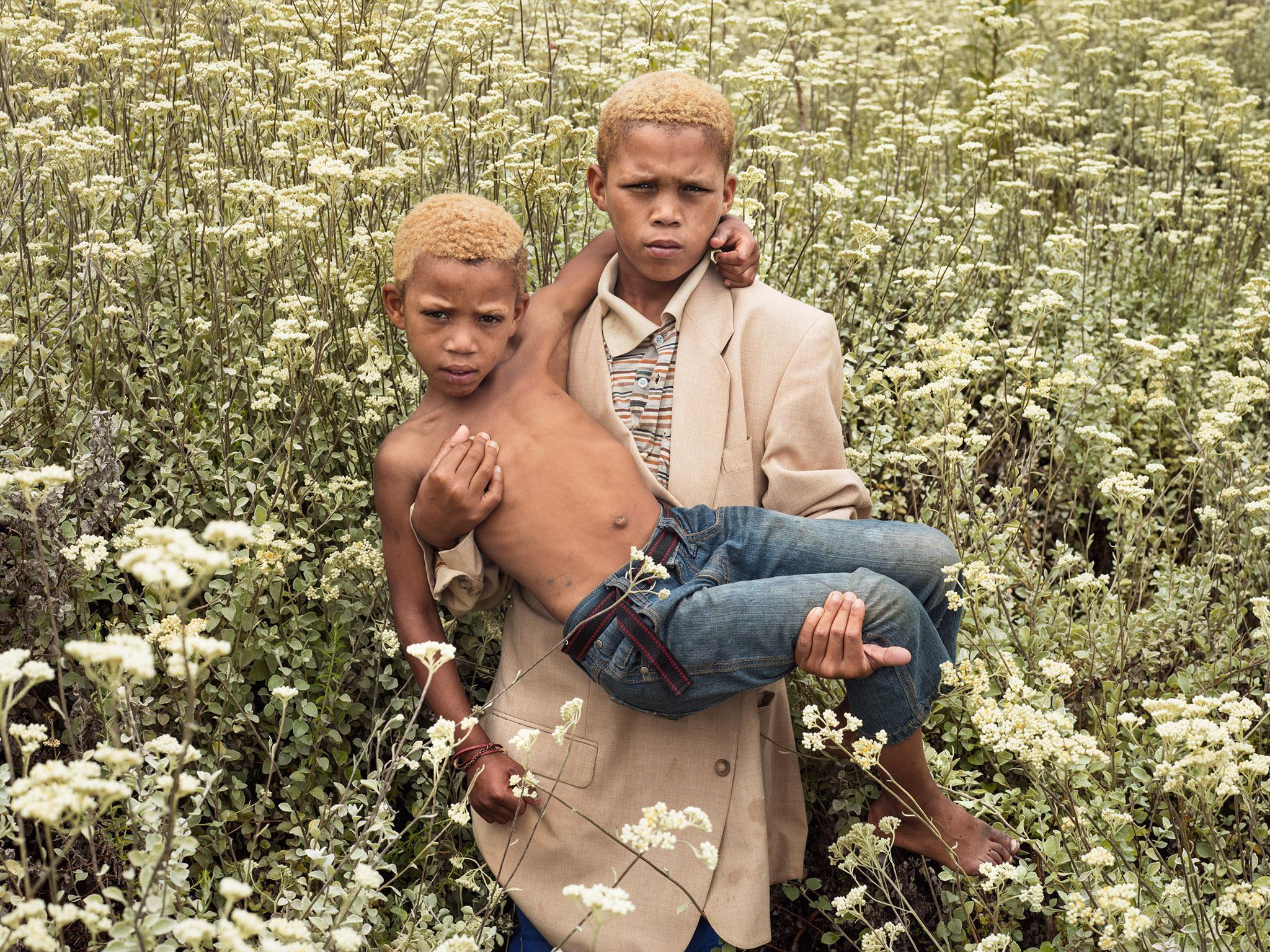1. My initial reaction was surprise and intrigue at the content of the photographs. It was jarring to see the subjects with monkeys and hyenas on leashes, and the devastation and anguish of the people and their surroundings, because it represents a culture so different from my own. However, at the same time, I really appreciate the composition, quality, and subject matter of Hugo's works.

2. I would categorize Hugo’s work as documentary portraiture because he places an emphasis on shocking images. He does so to reveal the horrors of post-Apartheid Africa to fuel social justice for the mistreatment of the subjects he photographs.
3. Clifford Prince King also photographs solely black people, but King's and Hugo's photography styles are vastly different. King attempts to normalize the existence of queer black men through intimate photoshoots, often in a sexual but comfortable way, which is a form of social justice in itself. Hugo, on the other hand, leans into the complete devastation of the lives of marginalized people and the general population of South Africa. They are both realistic, but given the difference in location (Hugo-South Africa, King-New York), the circumstances are real in very different ways. I enjoy King's work more because it has a warmer tone than Hugo's.
4. If someone made Hugo's work today, it would likely continue to reflect South Africa's current events, which carry the same theme of devastation and inequality, but more intensely so, as violence in the country now is practically equal to post-Apartheid times.
5. Hugo's quote is incredibly raw, powerful, and brutally honest, which I love. I appreciate that he likes to make a connection with his subjects, and his description of them looking at each other feels like he and his subjects are staring into each other's souls, and understanding each other on a very base, human level. It is reminiscent of breaking the fourth wall in movies.



Comments
Post a Comment